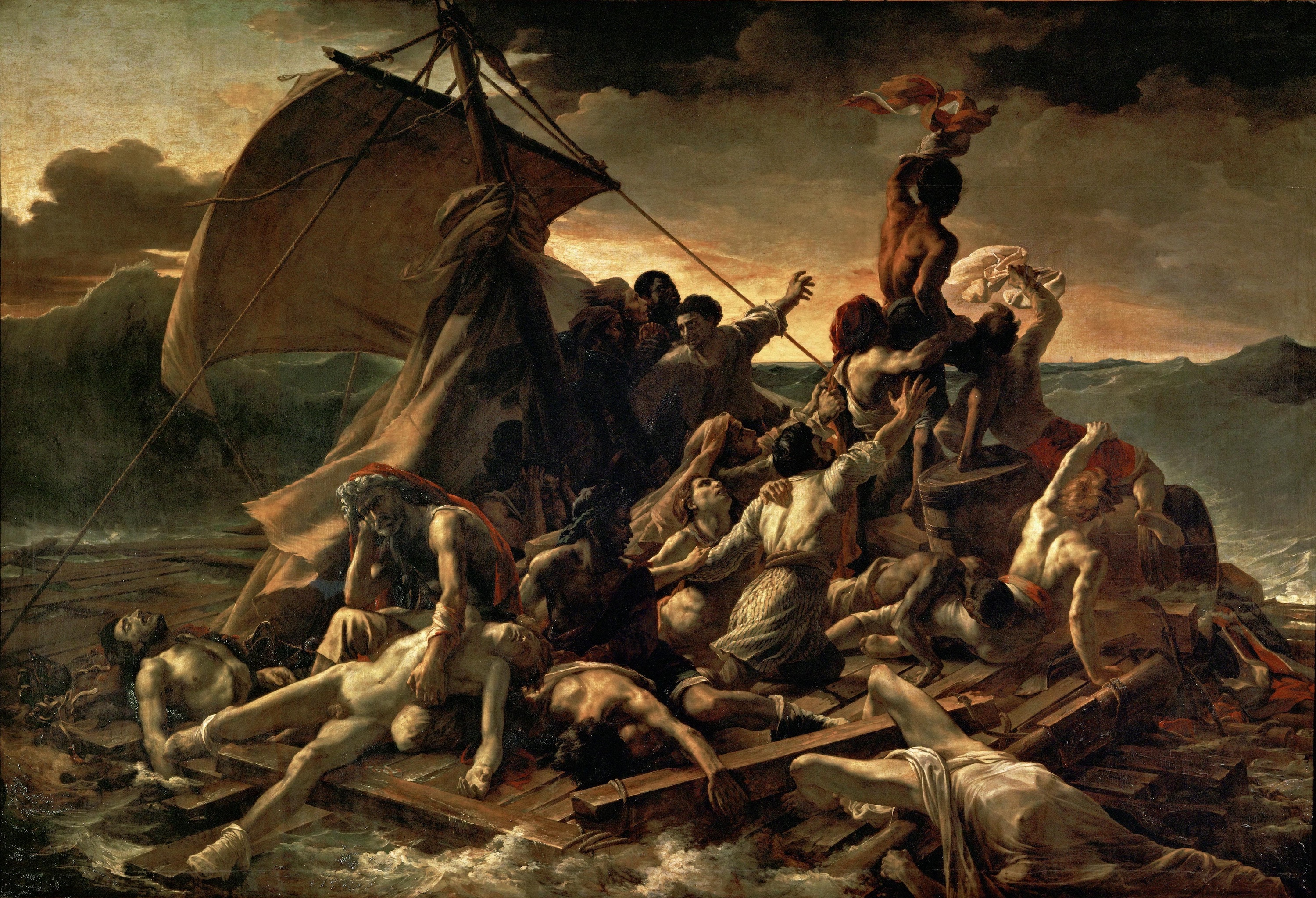Raft of the Medusa by Jean-Louis Théodore Géricault is a striking painting in both size, 13.75 x 23.5 feet (4.91 x 7.16 meters), and subject matter.
The painting depicts a moment in time from the wreck of the Medusa, a French naval frigate. The ship ran aground off the coast of Senegal in 1816. There was a shortage of lifeboats so a large raft was assembled and 150 survivors set off on what they thought would be a journey to safety.
What followed was a 13-day ordeal; with few supplies and drinking water, many died of thirst and starvation while others turned to cannibalism to stay alive. Ultimately only a handful of men survived. Géricault chose to capture the moment they spot a ship on the horizon, some dazed and others dying, but still some wave in desperation with the hope of rescue.
The shipwreck was a scandalous event in French history and not one they wanted immortalized. Géricault decided to paint this piece without commission as it was an event that recently occurred and was still widely talked about. The painting became a sensation and an icon of French Romanticism. Gericault prepared by studying cadavers' flesh tones and expressions; he also interviewed two survivors of the shipwreck.
The government did not react well to the macabre work of art, but the Louvre purchased it as part of their collection. It is a stunning painting that captures a real sense of desperation as well as the forcefulness of the human will to survive.
- Heidi Werber
P.S. If you would like to know more about this monumental painting, here it is!


 Théodore Géricault
Théodore Géricault